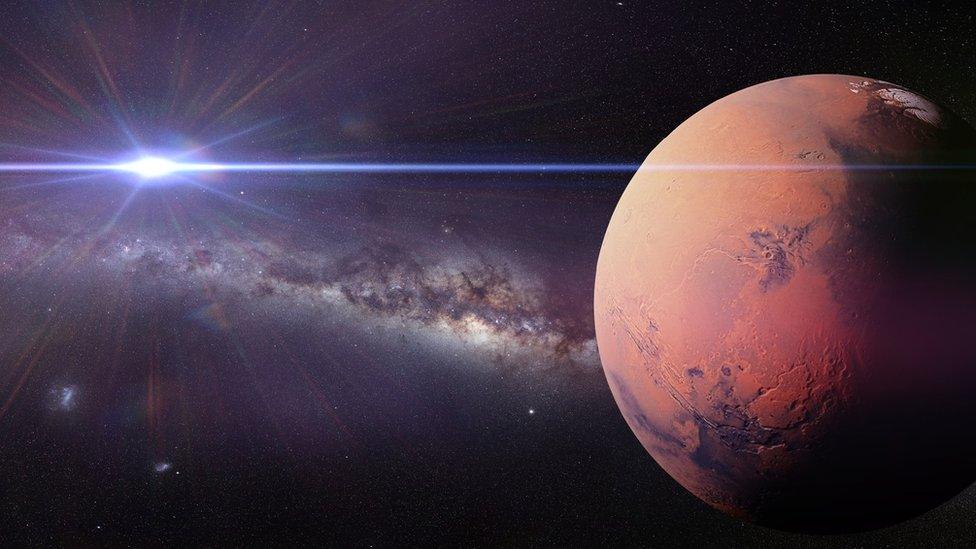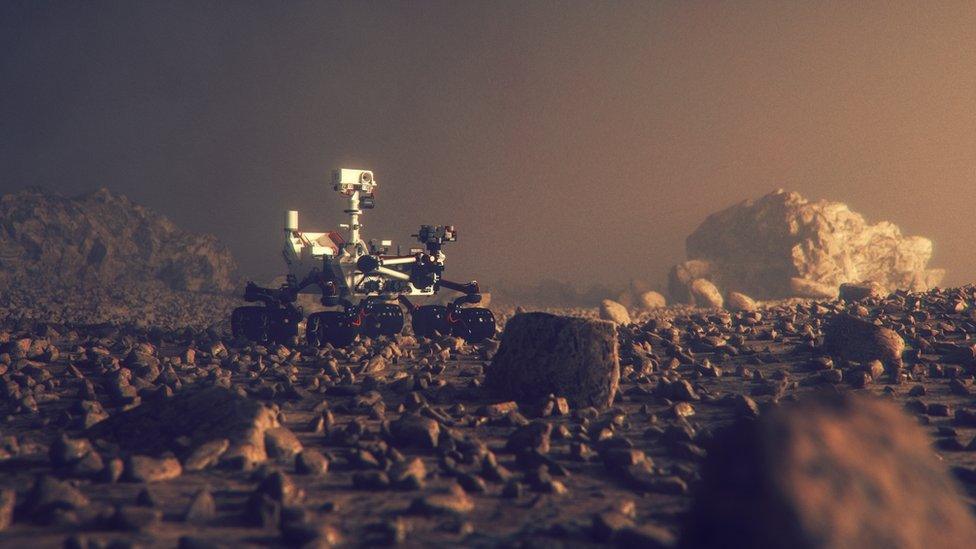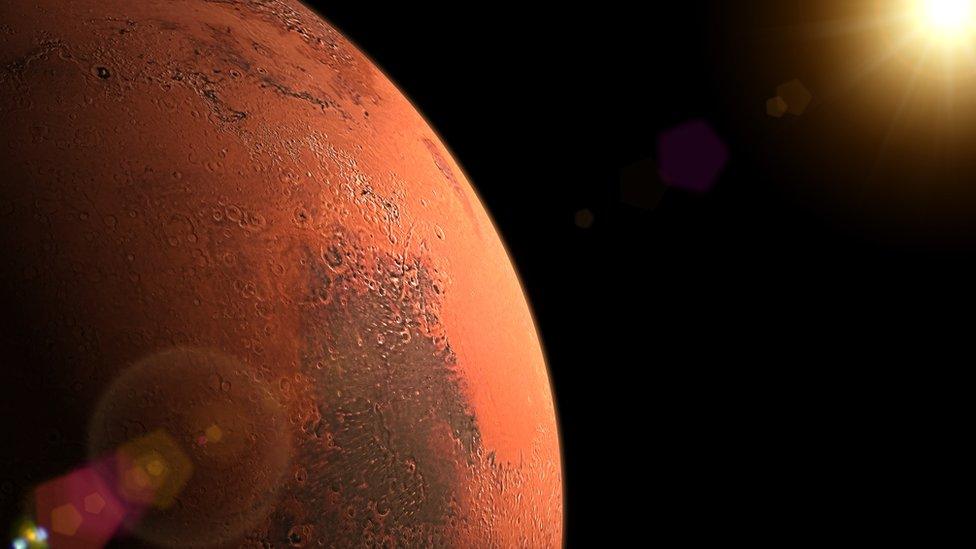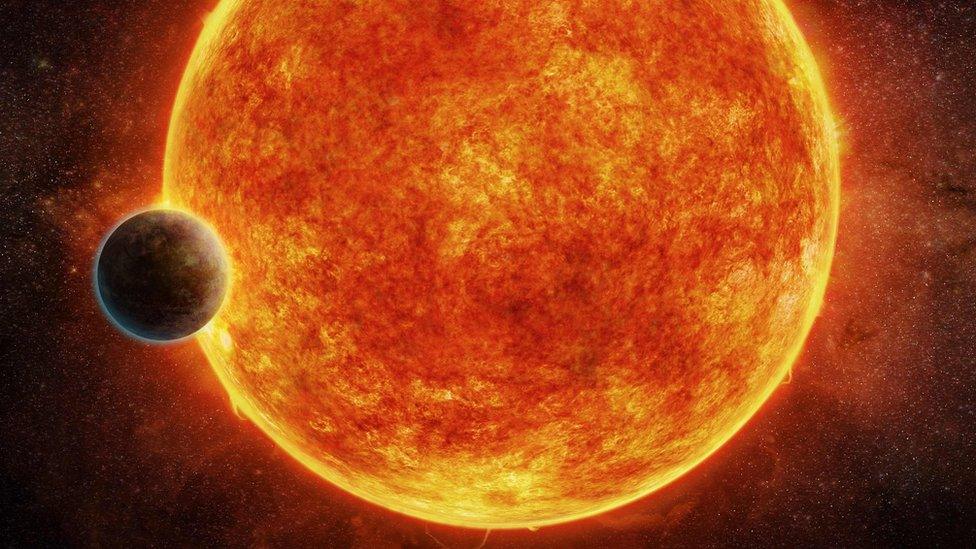Russian scientists find new way of searching for life on Mars
- Published
- comments

How on earth do scientists search for signs of life on Mars?
Well, one way is by using robotics like the mars rover, but Russian scientists have come up with another clever way of studying the red planet and others like it.
A team from Moscow State University have developed a laser scanner which examines the surface of the planet from tens of thousands of kilometres away.
Unlike scanning devices, rovers aren't able to cover large areas of a planet's surface while searching for traces of life. Scanners, though, can look at huge areas in one go.

Rovers have been sent to Mars to help researchers learn more about the red planet
The method developed by the Russian team will allow them to detect if there are any traces of life on Mars' surface.
The new scanner is set to be trialled in 2021-2022, when a small satellite will be launched into near-earth orbit.
"We have developed a scientific instrument of a very small size", said Mikhail Panasyuk, the President of the International Committee for Space Research.
And by small, they mean small! The tiny satellite is just approximately 10 x 10 x 10 centimetres in size. That's roughly double the size of a rubik's cube, so not very big at all!
The scanner will then be able to work from the satellite, looking at mars and other planets in the solar system.
However, the scanner can only look at the surface of a planet and can't detect anything underground.
The team hopes the scanner may be able to find tiny traces of life, like micro-organisms, that exist on the surface.
Brian Cox explores the incredible history of our solar system.
It's not only Russian scientists that are looking into life on Mars.
They're working alongside a team in Italy who have developed a similar method to help them detect life beyond the Earth.
The Italian astrobiologists are planning to send a spacecraft into space with the help of the European Space Agency (ESA) in July this year.
The teams from the two countries will then come together to make a joint satellite using both Russian and Italian devices for the next phase of their research.
- Published9 April 2020

- Published8 June 2018

- Published20 April 2017

